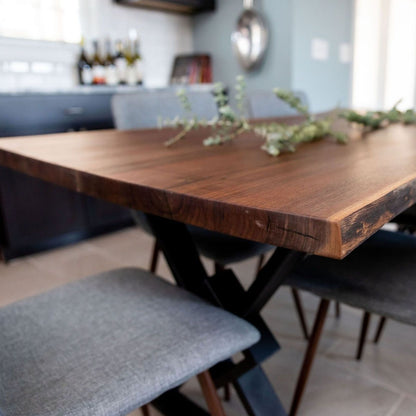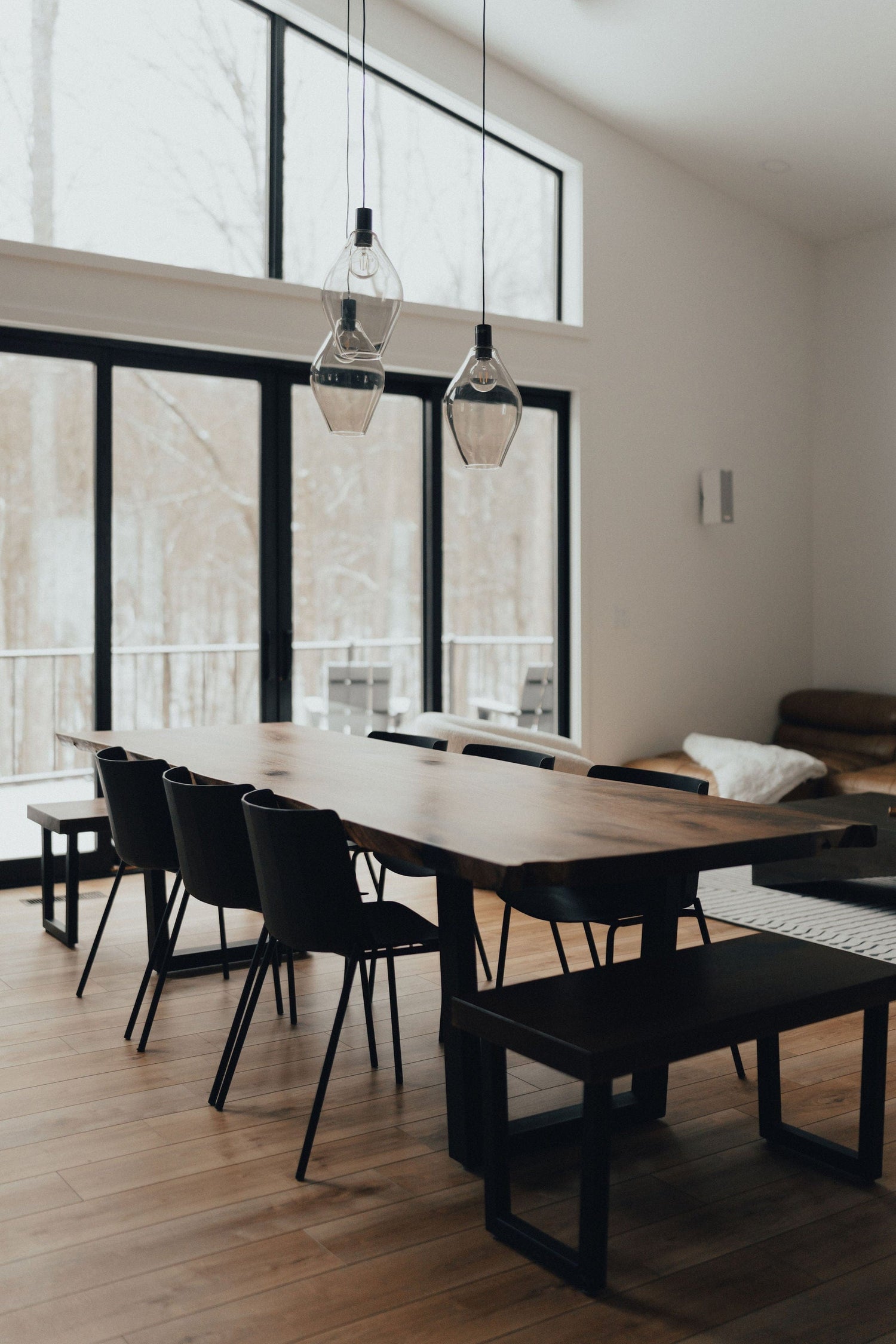The Best Materials for Durable and Elegant Dining Room Table Legs
Wiki Article
Just How to Choose the Perfect Dining-room Table Legs for Your Home Décor
Picking the perfect dining room table legs is a nuanced process that needs careful factor to consider of numerous elements, including your space constraints, visual choices, and useful needs. The interaction between measurements, designs, and products can considerably influence the setting of your dining area, making it vital to approach this decision methodically.Assess Your Dining Area
Evaluating your dining room is critical for selecting the right table legs that match both aesthetic appeals and capability. Begin by gauging the measurements of your dining location, consisting of ceiling elevation, floor space, and closeness to various other furnishings. This info will assist establish the ideal dimension and elevation of your table, which straight affects the option of table legs.Following, think about the design and layout of your eating room. As an example, an open-concept style might gain from table legs that use aesthetic lightness, such as slender metal or acrylic options. Alternatively, a more standard setup may require strong wooden legs that give a feeling of durability.
Examine the existing color scheme and materials in your dining area. Balancing the table legs with these aspects produces a cohesive appearance that boosts the general design.
Inevitably, an extensive assessment of your dining area will assist you in making an informed decision, making sure that your table legs not just improve the visual charm however additionally serve useful objectives.
Consider Your Design Preferences
When selecting dining-room table legs, it is vital to mirror on your personal design choices, as they considerably influence the general aesthetic of your eating space. Your option of table legs can either complement or comparison with existing decor, making it essential to straighten them with your favored interior decoration style.If your home leans towards a modern aesthetic, think about smooth metal or minimal wooden legs that give a tidy, uncluttered look. For a much more typical approach, ornate wooden legs with intricate carvings can include a touch of style and refinement. Industrial designs take advantage of durable, raw products such as recovered timber and metal mixes, reflecting a tough charm.
In addition, farmhouse and rustic designs often prefer durable, chunky legs that stimulate a sense of heat and convenience. Alternatively, if your decoration is eclectic, you may select non-traditional forms or a mix of materials to produce aesthetic passion.

Evaluate Material Options
The selection of product for eating room table legs plays a pivotal role in both longevity and visual appeal. Typical products consist of wood, metal, and composite choices, each offering unique attributes that can affect the total appearance and long life of your table.Timber is a classic choice, understood for its heat and convenience. Woods like oak and walnut give outstanding toughness and can be finished in various stains to match any kind of decoration. Nonetheless, softwoods like ache are extra vulnerable to scrapes and dents, making them less perfect for high-traffic areas.
Steel legs, commonly crafted from steel or light weight aluminum, exude modernity and commercial beauty. They are resistant and extremely resilient to wear, making them appropriate for families with kids or frequent celebrations (dining room table legs). In addition, steel can be finished in various colors, enhancing the modification opportunities
Composite products, such as MDF or laminate, offer price and varied layouts. While typically much less durable than strong timber or steel, they can still give an elegant appearance and are frequently very easy to maintain.
Eventually, the material you select should line up with your way of life, visual preferences, and read what he said the degree of usage your eating table will experience.
Determine Elevation and Size
Choosing the proper elevation and size for your dining area table is vital for both functionality and convenience. The common elevation for dining tables usually ranges from 28 to 30 inches, allowing adequate legroom for many individuals when seated. It is essential to consider the dimensions of your dining room and the types of chairs you plan to utilize.
Additionally, take into consideration the proportions of your dining area. A larger table in a spacious location can create a grand atmosphere, review while a smaller sized table works well in even more intimate setups. Inevitably, the appropriate elevation and size will certainly integrate with your total decoration and improve the dining experience for you and your visitors.
Explore Personalization Opportunities

Furthermore, the style of the legs can be tailored to fit different styles, such as rustic, modern, or commercial. Conical legs can stimulate a mid-century contemporary feeling, while beefy, block-style legs may reverberate with standard or farmhouse decoration.
Homeowners can also check out shade surfaces, from natural timber discolorations to repaint, allowing them to match or contrast with the tabletop and bordering decoration.
Furthermore, leg elevation can be gotten used to suit details seating plans or individual choices, improving both comfort and capability.
Finally, unique embellishments, such as carvings or ornamental brackets, can additionally customize the table legs, making the eating experience not simply a declaration yet a meal item in the home. By taking into consideration these customization alternatives, house owners can develop a dining-room table that genuinely reflects their originality.
Conclusion
Selecting the excellent dining-room table legs requires mindful factor to consider of various elements, consisting of the measurements of the eating space, design preferences, material sturdiness, and preferred elevation. Modification options additionally boost the capability to achieve a natural visual that enhances the total style. By methodically assessing these aspects, homeowners can ensure that the chosen table legs not only meet functional demands but additionally add favorably to the eating experience and ambiance of the home.Picking the perfect dining space table legs is a nuanced procedure that needs mindful consideration of various elements, including your space constraints, visual choices, and useful needs.Examining your dining area is critical for picking the right table legs that match both aesthetic appeals and functionality.When determining dimension, measure the area where the table will be put recommended you read to ensure it fits pleasantly, permitting for at least 36 inches of clearance around the table for simple movement. A larger table in a spacious area can develop a grand setting, while a smaller table works well in even more intimate setups.Selecting the perfect dining room table legs requires careful factor to consider of numerous elements, consisting of the dimensions of the dining area, style preferences, material resilience, and desired height.
Report this wiki page